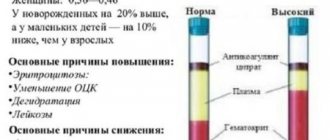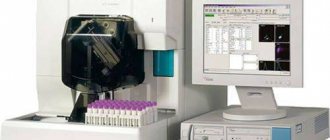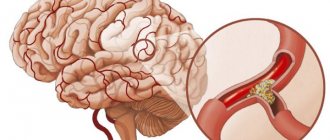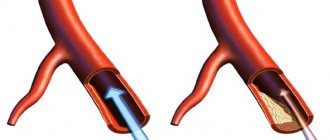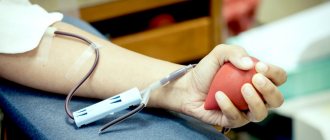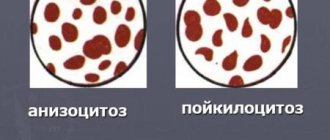The human circulatory system consists of several types of vessels, some of which are directly involved in regulatory functions. Their main part is arterioles, small-diameter arteries that branch into a capillary network. This type of vessels is of great importance in many physiological processes, including maintaining blood pressure levels and regulating general peripheral vascular resistance.
Structure
In structure, the arteriole is as close as possible to the muscular type arteries, although they have a smaller diameter of 100-50 microns. They are an intermediate link in the blood flow, connecting the main vessels and the capillary network.
The walls of arterioles consist of three layers:
- The inner membrane (called intima), consisting of endothelial cells bounded by a basement membrane. Under the layer of endothelial cells are single subendothelial cell clusters and an elastic membrane. The surface of the inner layer of arterioles is not homogeneous, but is saturated with chemoreceptors. With their help, you “adjust” your own tone and the tone of blood vessels throughout the body by capturing biologically active compounds from the blood and transmitting signals to myocytes - muscle cells involved in regulating the tone of muscle-type vessels.
- The middle shell, consisting of spirally arranged muscle cells. Connected to the inner layer by perforation, they respond to changes in blood composition by contracting or relaxing, protecting the lumen of the capillaries and arteries from excessive stress due to excessive filling. The muscular layer consists of two layers of myocytes, but this is enough for the arterioles to perform efficiently the functions of “faucets of the vascular system” (as I.M. Sechenov called them in his works).
- The outer shell, consisting of a thin layer of adventitial cells. This part is so thin that it completely merges with the surrounding tissues, consisting of connective cells.
Like larger-diameter arteries, arterioles branch, becoming thinner and gradually turning into capillaries. The thinnest branches - precapillaries - have a diameter of about 15 microns. Their structure does not differ from larger ones, but in places where they branch into smaller ones they have muscle sphincters, consisting of 2-3 layers of spirally arranged myocytes. Most of the time, when a body part or organ is not actively involved, the precapillary sphincters are closed.
searching results
No. 526 Chiropractor 14.01
Hello. Tell me, is it possible to do a massage if a child is crying? The child is 4 months old; at birth, depression syndrome was diagnosed as muscle hypotonicity. We suffered from streptoderma two months ago. But 1-2 small elements appear every two weeks in the form of a small abscess on the legs. They prescribed Cortexin injections and a course of massage. How to be. Thank you further
Olga Ustinova, St. Petersburg
We suggest you read: How to quickly increase the fat content of breast milk for a young mother
Hello! I underwent rheoencephalography, and they wrote me the following conclusion: Moderate vascular hypertonicity in the VBB. Please tell me what this means. No one explained anything at the clinic, only after that they gave directions to undergo additional examinations (ultrasound of the heart) further
Hello, my name is Anna. I am 23 years old. I did an REG after an accident. Left FM lead: pulse blood flow to the vessels: not impaired. Tone of large and medium arteries: normal. Tone of arterioles and precapillaries: increased. Venous outflow: normal. Lead FM right: Pulse blood filling of vessels: moderately reduced.
Help decipher REG: FM lead
-pulse blood supply is normal
- PC asymmetry in physiol. Allowed Within
- the tone of the afferent vessels is slightly increased
- the tone of arterioles and precapillaries is significantly increased
-venous outflow is moderately difficult. OM lead
- pulse blood filling is moderately increased on the left, sharply increased on the right
- adductor tone There are few vessels. Promoted
- the tone of arterioles and precapillaries is sharply increased
-venous outflow is moderately expensive. Further
Hello! Please explain the diagnosis and your recommendations. I am 40 years old
Methodology: REG. Diagnosis: CVD
Conclusion: Volumetric pulse blood filling is increased in all pools (Fms by 58%, Fmd by 71%, Oms by 171%, Omd by 33%). The tone of the main arteries is reduced in all pools. The tone of large arteries is reduced in all basins. The tone of the medium and small arteries is reduced in the basin of the left vertebral artery. Peripheral vascular resistance is within normal limits in all pools. Bass in all. Further
Antipova Olga, Moscow
No. 12 295 Pregnancy and childbirth 07.03
Good afternoon 3 weeks ago I was admitted to the hospital and came out with a brown drop of blood. The hospital ophthalmologist wrote after the ultrasound that there was a threat and tone and that’s all. I had no tone - the doctor told me this upon admission. I'm on the trail. The day I went and did an ultrasound for a fee, the doctor told me that this could happen until the chorion is attached to the walls of the uterus, the ultrasound said good, there is no tone, the baby’s heartbeat is good. I stayed in the hospital for 10 days after that. There I was injected with papaverine, took magnesium B6 tablets and... Further
Hello! I am 70 years old. Lately I have been experiencing headaches, dizziness, and rarely fainting and other symptoms. Conclusion REGot 10.07.15 – Mixed REG type (hypertensive and sclerotic). Volumetric pulse blood filling is increased in the internal carotid arteries. Within normal limits in the basin of the right vertebral artery.
Viktor Petrovich, Zlatoust
Hello! I am 70 years old. Lately I have been experiencing headaches, dizziness, and rarely fainting and other symptoms. Conclusion REGot 10.07.15 – Mixed REG type (hypertensive and sclerotic). Volumetric pulse blood filling is increased in the internal carotid arteries. Within normal limits in the basin of the right vertebral artery.
Hello! I am 71 years old. Lately I have been experiencing headaches, dizziness, and rarely fainting and other symptoms. Conclusion REGot 10.07.15 – Mixed REG type (hypertensive and sclerotic). Volumetric pulse blood filling is increased in the internal carotid arteries. Within normal limits in the basin of the right vertebral artery.
Hello. I have a question like this: can a girl use contraceptives for prevention, i.e., for tone? Further
Chekhunov Valery, Moscow
No. 9 250 Chiropractor 30.07
Hello, my right hip is slightly turned outward, it appeared due to the habit of standing for long periods of time in this position. And because of this, I often have pain in the thigh (in the back, in the buttock area) when I stand for a long time or quickly walk or run. Please tell me, are there any independent methods of treatment or exercises so that the hip gets back into place and doesn’t hurt? Thank you. Further
Batueva Maria, Kemerovo
18 Online consultations are for informational purposes only and do not replace a face-to-face consultation with a doctor. Terms of use
Your personal data is securely protected. Payments and site operation are carried out using the secure SSL protocol.
Functions of arterioles
The normal physiology of the human body, depending on the degree of blood supply, is largely dependent on arterioles. The main task of this structural component of the circulatory network is to regulate blood flow in organs and tissues.
The mechanism of regulatory functions is as follows:
- Tension of the myocyte layer of blood vessels, as a result of which there is an increase in its tone and a decrease in the volume of arterial blood passing through the vessel. It is observed in organs and tissues that are not currently involved in active work: in muscles at rest, in some internal organs during rest or sleep. Increased tone is normally recorded locally, that is, in a separate part of the body or organ.
- Relaxation of the myocyte layer of blood vessels, as a result of which their tone decreases and throughput increases. It is observed both locally and systemically, but more often relaxation of the muscle layer occurs in tissues and organs involved in active work: when performing physical exercises in individual muscle groups, in internal organs during the period of their active functioning.
The distribution of blood after cardiac output to the organs depends on the ability of the vessels to contract and relax in time. The same factor directly affects the speed of blood flow in different blood pools.
Precapillary arterioles also participate in the distribution of blood. Thanks to the presence of sphincters, they can regulate the number of capillaries involved in the blood supply. If it is necessary to locally enhance metabolic processes, the sphincters relax, the area of the involved capillary network increases, and the local “flow” of blood increases.
Also, the functions of arterioles include systemic regulation of blood pressure in the vessels. It is on them that the blood pressure indicator depends on different conditions. Normally, this function is performed around the clock, and changes are observed throughout the body. The systemic hydrodynamic resistance of the entire circulatory system will depend on how adequately the arterioles respond to the physiological state of the body, the composition and rheological properties of the blood.
Help me understand the results of REG and RVG
Diabetes mellitus and its treatment
We were examined because we are going to a sanatorium
help me figure out what this all means
pulse arterial blood filling is normal // normal
tone of the main arteries—————-increased 2% // normal
total tone of regional arteries—increased 11% // increased 7%
tone region. arteries large caliber— —reduced 208%//reduced 196%
tone region. arteries average caliber— —reduced 58% // reduced 57%
dicrotic ind (tone of small-caliber arteries - normal//increased 21%
pulse arterial blood filling is normal // reduced 6%
tone of the main arteries——————norm // increased 16%
total tone of regional arteries———norm // increased 13%
tone region. arteries large caliber— —reduced 126% // reduced 72%
tone region. arteries average caliber——reduced 38% // norm
dicrotic.ind (tone of small-caliber arteries - reduced 60% // reduced 72%
These methods have very low diagnostic value and do not provide insight into the nature of blood flow.
Thank you very much, if it’s not too much trouble, please tell me what we need to pay attention to regarding our experience of illness. Dr.Anna
Pulse blood flow is slightly reduced on the right, moderately reduced on the left.
PC asymmetry is insignificant
The tone of arterioles and precapillaries is insignificant. elevated on the right, moderately elevated on the left.
We suggest you read: Can pregnancy occur during menstruation?
Hypotension of the venous network: no.
Venous outflow is preserved.
Blood circulation means. failure.
There is an increase in the time to reach the PV of the segment under study.
Pulse blood flow is normal on the right, moderately reduced on the left.
The tone of arterioles and precapillaries is moderate and increased.
Hypotension of the venous network - no.
Venous outflow is preserved on the right, preserved (the phenomena of venous stagnation are insignificant) on the left.
Even before undergoing RVG, Vitalik visited a vascular surgeon (before undergoing VTEK). He prescribed him the following medications: Tiklo: 250 * 2 times - 1 month
Mexicor 2.0 No. 10 intramuscular, then tablets 10 mg *2 rubles. 1 month
I didn’t see the doctor about the RVG results.
Judging by the conclusion of the RVG, is it still relevant to take these medications? And is it even worth taking them?
Types of regulation of arteriolar tone
There are several mechanisms for regulating arteriolar tone, depending on the scale of changes made. This means that an increase or decrease in the tone of arterioles in individual organs and tissues differs in many respects from that which occurs with a systemic full-scale change in the tone of this type of vessel. The classification of control mechanisms distinguishes between local and central regulatory mechanisms.
Local regulation of arteriolar tone
Even in the absence of irritants, arterioles maintain tone, which does not depend on the influence of external and internal factors. It is called basal tone, and it is its value that determines the overall level of blood pressure and the degree of blood supply to the capillary network. Local increase and decrease in tone depends on the acid-base balance of the blood and the content of carbon dioxide in it:
- a decrease in the pH level of the blood leads to a decrease in the tone of vascular smooth muscles, as a result of which the blood supply to the capillaries increases;
- an increase in the acid-base balance of the blood leads to a local narrowing of the vascular lumen and a decrease in blood supply to the capillary network;
- an increase in CO2 content in the blood provokes relaxation of myocytes and increased blood supply to tissues;
- a decrease in the level of carbon dioxide in the blood leads to a decrease in blood supply to the capillaries.
The process of local regulation is an important physiological process that allows the body to redistribute blood between organs and tissues depending on the load on them. As a result of this process, active and harmonious restoration of tissue hemostasis occurs.
Local regulation also depends on other blood factors. For example, when soft tissue is injured, enough platelets are released into it to stop bleeding. Along with an increase in their level, the factor thromboxane A2 increases, a pressor factor that increases the tone of smooth muscles. This mechanism prevents blood loss.
During inflammatory processes in the blood, the amount of prostaglandin and histamine—depressor, that is, relaxing factors—increases. They, unlike the pressor elements of the blood, allow blood to more actively fill the tissues affected by inflammation.
Hormonal regulation
The tone of arterioles is significantly influenced by hormones:
- Vasopressin is a hormone produced by the neurohypophysis that gently increases vascular muscle tone. The mechanism of its production is not completely clear, but in most cases, an increase in its level is associated with systemic changes in the body.
- Angiotensin is a hormone synthesized in the blood plasma during the period of decreased pressure in the renal arteries. The action of this hormone is to protect organs and tissues from lack of blood supply.
- Adrenaline is an adrenal hormone, the synthesis of which increases in the presence of stress factors. The endothelium and muscle layer of blood vessels react to them depending on their location. For example, smooth muscle arterioles in soft tissues, equipped with alpha-adrenergic receptors, narrow, limiting blood flow. The arterioles of the brain and motor (skeletal) muscles are equipped with beta-adrenergic receptors, which, when interacting with adrenaline, provoke relaxation of the vascular walls. As a result, vital organs (mainly the brain) and motor muscles receive the maximum amount of blood.
Nervous regulation
The sympathetic innervation of arterioles determines their sensitivity to nerve impulses sent to neurotransmitters:
- catelochamines, sensitive to norepinephrine, which causes spasm of the muscular layer of blood vessels;
- acetylcholines, which under the influence of nitric oxide cause relaxation of myocytes.
The former are localized in skeletal muscles, and the latter in the cavernous bodies of the genital organs and salivary glands.
Types of changes in vascular tone
Question No. 3134 (2010-04-29)
Hello! Help me please, I have the same problem. I live in the city of Essentuki and it is very difficult to get to a neurologist here. I have vegetative-vascular dystonia of mixed type. A year ago, attacks, headaches, dizziness, anxiety, panic and fears began. I contacted a neurologist and he prescribed cinnarizine.
I drank it, it seemed to feel better. And then it got even worse. I was admitted to the hospital. There I did an REG and here is the conclusion: Pulse blood flow to the vessels of both hemispheres is significantly reduced. The tone of large and medium arteries is increased, the tone of small arteries is within normal limits. Venous outflow is difficult. Elastic properties of the main arteries are within normal limits.
When performing functional tests with turning the head to the right, left, tilting the head back: an increase in blood supply in both hemispheres. When the head is tilted forward: blood filling without dynamics. Pulse blood flow in the vessels of the left IMS is within normal limits, and in the vessels of the right IMS it is significantly reduced.
blood filling without dynamics. And after this conclusion I was discharged from the hospital. Now I feel very bad too. I have a constant headache, especially in the back of the head, dizziness, I constantly yawn and want to sleep, lack of air, pain in the heart area. Arms and legs go numb, weakness, and sometimes blood pressure rises.
Frequent urination. Hands are constantly cold and feet too, heavy sweating. Anxiety, some kind of fear. Plus cervical osteochondrosis. Help me please, what should I do? I did an ultrasound on the kidneys, everything is fine, the cardiogram is also good, I checked the thyroid gland, the liver is fine. Help, I beg you. Thank you very much in advance!
There is always a reason for any symptoms. You list a lot of different complaints and not all of them fit into the diagnosis you indicated. As you understand, without an examination, which unfortunately is not possible, I cannot recommend taking any specific medications.
For this reason, I can only give more or less general recommendations.
Regarding problems with blood vessels and the results of the examination, you need a course of therapy with drugs that affect vascular tone and blood rheology.
Regarding panic attacks, the most effective would be to take one of the antidepressants for several months.
By the way, all this must be prescribed taking into account the patient’s age, and I don’t even have this information.
The tone of cerebral vessels can be decreased or increased. In the first case, there is hypotonicity, in the second - hypertonicity, the features of which are different.
Hypotonicity
Hypotonicity or hypotension is a decreased vascular tone, which is expressed in a decrease in blood flow volume and a drop in pressure in the arteries. When the tone of small vessels decreases, the flow of blood into the organ increases. The walls of the arteries are stretched during contraction of the ventricles of the heart (one of the states of the organ's muscle), thereby causing throbbing headaches.
If the tone of the small veins located in the brain decreases, there is difficulty in the outflow of blood from the organ. It is in the area of veins and venous sinuses that the largest volume of blood is localized. When a person is lying down, when the head is below the level of the neck (when bending forward or throwing it back), during physical exertion and emotional overload, blood flow is further disrupted, causing bursting headaches.
Hypertonicity
Hypertonicity of cerebral vessels is an increase in their tone, that is, the degree of wall tension, which causes an increase in resistance to blood flow. Hypertonicity is characterized by an increase in blood pressure and the occurrence of corresponding symptoms.
Hypertonicity, like hypotonicity, can occur against the background of the following pathological conditions of the body:
- constant lack of sleep and overwork;
- abuse of invigorating drinks (coffee, tea, etc.), alcohol, smoking;
- long stay in a stuffy room;
- frequent emotional experience, stress;
- development of hormonal disorders;
- VSD;
- development of atherosclerosis or osteochondrosis;
- heart and kidney diseases.
Spasm of the walls of blood vessels contributes to the narrowing of the lumen of the latter, causing a decrease in the volume of passing blood. Hypoxia develops, and with significant narrowing of the lumen, tissue ischemia.
Participation in pathophysiological processes
Arterioles are actively involved in inflammatory processes and allergic reactions. During inflammation in the blood, a local (local) increase in the level of prostaglandin and histamine is observed, under the influence of which their walls relax and the lumen expands. Against this background, typical signs of localized inflammation arise: redness with swelling, local increase in temperature.
Histamine, in addition to protecting against inflammation, plays a role in the development of allergic reactions. They are produced by mast cells when they come into contact with an irritant - an allergen. Under the influence of histamine, a decrease in vascular tone occurs, which can be both localized and systemic. Locally, for example, allergic rhinitis or angioedema is expressed, and with systemic allergies, urticaria and anaphylactic shock are observed.
With anaphylactic shock, a total decrease in the tone of the precapillary sections of the circulatory system occurs, due to which the volume of blood filling the capillaries exceeds the total volume of blood circulating throughout the body. As a result, the process of blood flow from arteries to veins is disrupted, which quickly leads to shock and death.
How to properly lower blood cholesterol?
Have you been struggling with HYPERTENSION for many years without success?
Head of the Institute: “You will be amazed at how easy it is to cure hypertension by taking it every day...
Read more "
If a person has high cholesterol, this means that clots may form in the blood. They attach to arterial walls and interfere with normal blood circulation. This forms blood clots that can completely block the lumen of the vessel. All this significantly threatens a person’s life, so it is very important to keep cholesterol levels under control. Since this is not easy to do, this level is often increased. How to lower blood cholesterol? There are several ways to do this, although you should consult your doctor before using them.
- Medicines
- Folk recipes
- General recommendations
Medicines
The ideal drug that can reduce the amount of cholesterol has not yet been invented, although scientists are trying to achieve this goal. There are several groups of medications that help to do this at least partially, but they have both positive and negative sides. Let's look at a few examples.
- Statins. They are the most popular group among those used to lower cholesterol. Usually they are consumed once a day, it is better to do it at night. The essence of the action of statins is that they block an enzyme contained in the liver that stimulates, so to speak, the production of cholesterol. The fact that it is better to take the prescribed drug at night is due to the following fact: cholesterol synthesis is especially activated at night. However, statins are not prescribed for serious liver disease because very high concentrations of these substances can be created in the blood, which leads to side effects.
- Fibrates. They affect lipid metabolism, and their action is based on changes in cholesterol transport, which occurs at the gene level. Their advantages include reducing the risk of complications from the cardiovascular system, increasing good cholesterol and preventing acute pancreatitis. Despite this, there are disadvantages that need to be taken into account. For example, this is a common occurrence of side effects.
- Bile acid sequestrants. Bile acids themselves are needed for the digestion process and are synthesized from cholesterol. Sequestrants bind such acids, thereby converting them into compounds that are insoluble and excreted in the feces. In response to their lack, the body increases the synthesis of acids from cholesterol, which leads to its reduction. However, medical practice rarely resorts to the use of drugs from this group.
Medicines do not always give the expected result, because they can have a negative effect. Therefore, some people prefer not to use them. How to lower cholesterol without drugs? This can be done by following general recommendations and using traditional medicine.
Folk recipes
Let's see what folk recipes there are that allow you to fight high levels of cholesterol in the blood.
- Dill and apples. It's simple - you need to eat these foods every day.
- Infusions of choleretic herbs. They help normalize the functioning of the liver and gallbladder. It is recommended to take such infusions for two weeks, and take a break for a period of one week.
- Bee products. It is recommended to drink a ten percent propolis tincture several times a day, fifteen drops before meals, about fifteen minutes. A product such as bee bread is very useful. It is recommended to dissolve it every day, two grams several times a day before meals.
- Milk thistle. You need to take fifty grams of crushed milk thistle seeds and pour half a liter of vodka over them. They should infuse in a dark bottle for two weeks. After this, you can take twenty drops of infusion, diluting them in half a glass of water. It is better to drink them half an hour before meals several times a day. One course of such treatment lasts a month. It is recommended to do two such courses per year, in between which you can drink tea from the same herb. To prepare it, one teaspoon of seeds should be poured with boiling water in the amount of one glass. You need to drink it before meals.
We figured out a little about how to reduce cholesterol using folk remedies. At the same time, regularity and monitoring your condition are important, because such recipes can have different effects on human health.
General recommendations
No one will argue that nutrition plays a very important role in the issue we are discussing. It is very important to reduce fat. You should reduce your intake of sources of saturated fat, such as meat, cheese and oils, as much as possible. It is better to replace these products with poultry, fish and low-fat dairy products.
The list of cholesterol-lowering foods is quite large and is the topic of a separate article.
In addition to nutrition, you need to think about one more thing. The fact is that the so-called “good cholesterol” plays an important role in the development of atherosclerosis and other negative phenomena, because it interferes with the formation of plaques. Its decrease has a negative impact on health. Therefore, it is very important to raise the level of good cholesterol and lower the level of bad cholesterol. This can be done by engaging in physical exercise, which can clear the blood of large amounts of fat. If lipids are not retained in the vessels, they will not have time to settle on their walls. By the way, running helps to quickly reduce the level of fat that comes from food.
You can simply keep your body in good shape through physical labor, gymnastics, dancing, and so on. Elderly people and those who already have heart and vascular diseases can and even should walk for at least forty minutes every day. Such a walk will help reduce the risk of death from a heart attack or stroke by fifty percent. Although it is worth considering that such walks increase your heart rate. It is important to ensure that the pulse does not increase by more than fifteen beats in one minute, so exercise should be moderate and should not reduce the level of good cholesterol.
Of course, regarding how to lower blood cholesterol, do not forget that it is important to get rid of bad habits such as smoking and excessive alcohol consumption. Let's understand that a healthy lifestyle can prolong it and make its quality much better!
– by leaving a comment, you accept the User Agreement
- Arrhythmia
- Atherosclerosis
- Varicose veins
- Varicocele
- Vienna
- Haemorrhoids
- Hypertension
- Hypotension
- Diagnostics
- Dystonia
- Stroke
- Heart attack
- Ischemia
- Blood
- Operations
- Heart
- Vessels
- Angina pectoris
- Tachycardia
- Thrombosis and thrombophlebitis
- Heart tea
- Hypertension
- Pressure bracelet
- Normalife
- Allapinin
- Asparkam
- Detralex
Role in the development of hypertension
Hypertension in most cases is caused by atypically high arteriolar tone. Being in a contracted state, they maintain a high level of vascular resistance. As a result, blood pressure in the circulatory system steadily increases. In addition, there are situations in which the increase in pressure occurs sharply and unpredictably.
Both a gradual and sharp increase in vascular tone leads to a decrease in blood supply to the capillary network and a decrease in venous outflow of blood. The result is an increase in the total volume of circulating blood and an increase in blood pressure. Against this background, cerebral angiodystonic symptoms arise: headache (can be pulsating or bursting), nausea, weakness and dizziness, a feeling of a “heavy” head, tinnitus and visual disturbances (floaters, visual “noise”).
Intense spasm of the arterioles can lead to reactive narrowing of the arteries, as a result of which a patient with hypertension develops cerebral edema.
The mechanism of occurrence of attacks in hypertension has not been fully studied, but several predisposing factors have been identified:
- stress;
- increased sodium levels in the blood;
- hormonal imbalance;
- physical or emotional stress.
It is possible to recognize that arteriolar tone is increased by analyzing the electrical waves passing through the circulatory system. The difference in the degree of electrical conductivity of the blood and the surrounding tissue vessels can provide comprehensive information about whether vascular tone is normal and where pathological narrowed or dilated areas are located.
To reduce critical pathological tone, drugs with a depressant effect are used: antispasmodics, alpha-adrenergic receptor blockers, histamines, etc.
What is hypotensive action and can it be treated?
Hypotensive effect - what is it? This question often worries men and women. Hypotension is a condition in which a person has low blood pressure. Translated from the ancient Greek hypo - under, below, and Latin tensio - tension. The hypotensive effect is recorded when blood pressure is 20% lower than the average or initial values, and in absolute terms, SBP is lower than 100 mm Hg. in men, and in women - below 90, and DBP - below 60 mm Hg. Such indicators are characteristic of primary hypotension.
Syndrome is an indicator of CVS disorder. This condition affects all other functions of the body and its systems, primarily because it causes ischemia of organs and tissues, reducing the volume of blood that would deliver the required amount of nutrition and oxygen to vital organs in the first place.
Causes of pathology
Hypotensive conditions are always multifactorial. Normally, pressure interacts very closely with the brain: with normal blood pressure, tissues and organs are provided with a sufficient amount of nutrients and oxygen, vascular tone is normal. In addition, thanks to blood circulation, recycled waste (metabolic products) are removed in a sufficient volume, which are released by cells into the blood. When blood pressure drops, all these points are turned off, the brain starves without oxygen, cell nutrition is disrupted, metabolic products are retained in the bloodstream, and they are cause a picture of intoxication with a decrease in blood pressure. The brain regulates the process by turning on baroreceptors, which constrict blood vessels, and adrenaline is released. If the functioning of the central nervous system malfunctions (for example, prolonged stress), compensatory mechanisms can quickly become depleted, blood pressure constantly decreases, and the development of a state of fainting is possible.
Certain types of infections and their pathogens, when releasing toxins, can damage baroreceptors. In such cases, the vessels stop responding to adrenaline. Arterial hypotension can be caused by:
- heart failure;
- decreased vascular tone during blood loss;
- various types of shock (anaphylactic, cardiogenic, painful) - with them a hypotensive effect also develops;
- a rapid and significant decrease in circulating blood volume (CBV) during burns and bleeding;
- the hypotensive effect can be caused by injuries to the brain and blood vessels;
- excess doses of antihypertensive drugs;
- poisoning with fly agarics and toadstool;
- hypotensive conditions in mountain and extreme sports athletes;
- for infections with complications;
- endocrine pathologies;
- under stress, a hypotensive effect is also observed;
- hypovitaminosis;
- congenital pathologies of blood vessels and organs.
Separately, we can note the change in climate, seasons, radiation, magnetic storms, and heavy physical activity.
Classification of the disease
What is hypotension? It can be acute and permanent, chronic, primary and secondary, physiological and pathological.
Primary or idiopathic - is chronic in nature, is a separate form of NCD (neurocirculatory dystonia occurs in 80% of patients, when the work of the autonomic nervous system is disrupted, and it ceases to regulate the tone of the arteries) - this is a hypotensive disease. The modern interpretation of this phenomenon is neurosis due to stress and trauma of a psycho-emotional nature of the vasomotor centers of the brain. The primary type also includes idiopathic orthostatic hypotension. In translation, this is the occurrence of collapses suddenly, without reason. Provoking factors are lack of sleep, chronic fatigue, depression, all vegetative crises (adynamia, hypothermia, bradycardia, sweating, nausea, abdominal pain, vomiting and difficulty breathing).
Secondary or symptomatic hypotension, as a symptom, appears in the following diseases:
- Spinal cord injuries, hypothyroidism, diabetes mellitus, hypotensive syndrome in TBI, ICP.
- Osteochondrosis of the cervical spine, gastric ulcer, arrhythmias, tumors, infections, with hypofunction of the adrenal cortex, collapse, shock, pathology of the cardiovascular system - narrowing of the mitral valve, aorta.
- Blood diseases (thrombocytopenic purpura, anemia), chronic long-term infections, shaking paralysis, increased uncontrolled dose of antihypertensive drugs.
- Hepatitis and cirrhosis of the liver, chronic intoxication of various origins, kidney disease and the resulting chronic renal failure, hypovitaminosis of group B, limited insufficient intake (drinking) of water, subluxation of the cervical vertebrae during somersaults).
Hypotension may occur in the following cases:
Why do you feed pharmacies if hypertension is afraid of the usual like fire...
Tabakov has revealed a unique remedy against hypertension! To reduce blood pressure while preserving blood vessels, add to…
- during pregnancy (due to low arterial tone - hypotensive syndrome);
- in young women, adolescents with an asthenic constitution;
- in athletes;
- in older people, blood pressure may decrease due to atherosclerosis;
- during fasting;
- in children with mental fatigue, physical inactivity.
Physiological pathology can be hereditary; a hypotensive effect for residents of the north, highlands, and tropics is a normal phenomenon. In athletes, the pathology is chronic, all organs and systems have already adapted and adapted to it, it develops gradually, so there are no circulatory disorders.
There is also the concept of managed hypotension (controlled), which consists of deliberately lowering blood pressure with the help of medications. The need for its creation was dictated by large-scale surgical operations being carried out to reduce blood loss. Controlled hypotension was attractive because a lot of clinical and experimental observations showed that with a decrease in blood pressure, wound bleeding decreases - this was the prerequisite for the creation of a method first used in 1948.
Currently, controlled hypotension is widely used in neurosurgery for the removal of brain tumors, cardiology, tracheal intubation, hip replacement, and awakening after operations. The indication for its implementation is the threat of significant blood loss during traumatic and simply complex operations. Controlled hypotension has long been achieved by using ganglion blockers. Today other drugs are also used. The main requirements for them are the ability to quickly effectively lower blood pressure for a short time and without dire consequences. Controlled hypotension is also used to reduce the risk of rupture of cerebral aneurysms, arteriovenous malformations, when there is practically no capillary network, etc. They are achieved by influencing various pathways of blood pressure regulation.
The acute symptomatic form of hypotension develops suddenly, quickly, simultaneously. It is observed in cases of blood loss, collapse, poisoning, anaphylactic and septic shock, cardiogenic shock, MI, blockades, myocarditis, thrombosis, dehydration as a result of diarrhea, vomiting, sepsis (in an organism unadapted to this, blood flow is disrupted). Antihypertensive therapy is used not only for hypertension, it is used for liver disorders, kidney diseases, rhythm disturbances, etc. Only the acute form of the disease has consequences for the body, when there are signs of bleeding and hypoxia of tissues and organs, in all other cases there are no The pathology does not pose a threat to life.
Symptomatic manifestations
Symptoms include:
- lethargy, especially in the morning;
- weakness, fatigue, decreased performance;
- absent-mindedness, memory loss;
- dull pain in the temples and frontal part of the head, dizziness, tinnitus;
- pale skin;
- weather sensitivity (especially to heat), signs of impaired thermoregulation - wet, cold extremities (arms and legs) at any time of the year;
- increased sweating;
- bradycardia;
- drowsiness, fainting;
- inability to tolerate travel by transport due to a tendency to motion sickness.
Hypotensive conditions require longer sleep - 10-12 hours - to restore normal well-being. And yet in the morning such people wake up sluggish. They often have a tendency to flatulence, constipation, belching air, and causeless aching pain in the abdomen. Prolonged hypotension in young women can cause menstrual irregularities.
First aid for fainting and collapse
Fainting (a short-term loss of consciousness due to insufficient blood flow to the brain) can go away on its own, but collapse requires medical intervention. With cardiac arrhythmias, dehydration, anemia, hypoglycemia, severe shocks, prolonged standing, or increased stress, hypotensive patients also develop acute hypotension, which leads to fainting. Precursors include tinnitus, dizziness, darkening of the eyes, severe weakness, and shallow breathing.
Muscle tone decreases, and the person slowly sinks to the floor. There is profuse sweating, nausea, and paleness. As a result, loss of consciousness occurs. At the same time, blood pressure drops, the skin acquires a gray tint. Fainting lasts for several seconds. The first aid in this case is to give the body a horizontal position with the leg end raised. If a person wakes up, you should not immediately sit him down, otherwise another fainting spell will follow. But if a person does not regain consciousness for more than 10 minutes, an ambulance must be called.
Unlike fainting, collapse is an acute vascular insufficiency in which vascular tone drops sharply. The main causes are myocardial infarction, thromboembolism, major blood loss, toxic shock, poisoning and infections (for example, severe influenza), and sometimes antihypertensive therapy. Patients complain of weakness, ringing in the ears, dizziness, shortness of breath, chills. The face is pale, the skin is covered with sticky cold sweat, blood pressure is low.
The difference between collapse is that the patient is conscious, but apathetic. There may also be orthostatic hypotension (develops after prolonged lying, squatting and subsequent sudden rise), its symptoms are similar to fainting, and there may be a disturbance of consciousness. In case of collapse, an ambulance is called, the patient lies with his legs raised, he must be warmed up, covered with a blanket, given a piece of chocolate if possible, and cordiamine dripped.
Diagnostic measures
To carry out diagnostics, an anamnesis is collected to identify the causes of hypotension and how long ago it appeared. To correctly assess blood pressure levels, it is required to measure it three times with an interval of 5 minutes. It is also monitored daily with blood pressure measured every 3-4 hours. The work and condition of the cardiovascular system, endocrine and nervous systems are examined. Electrolytes, glucose, cholesterol are determined in the blood, and an ECG, echocardiogram, and EEG are prescribed.
How to treat hypotension?
In case of secondary hypotension, the underlying disease must be treated. The combination of medications and other methods is a complex treatment, practiced primarily because there are not so many medications for treatment, and they do not always give the desired effect, and they cannot be taken constantly.
Non-drug methods include:
- psychotherapy, normalization of sleep and rest;
- massage of the collar area;
- aromatherapy;
- water procedures, first of all, these are various types of showers, hydromassage, balneotherapy (turpentine, pearl, radon, mineral baths);
- acupuncture, physiotherapy - cryotherapy, ultraviolet irradiation, electrophoresis with caffeine and mesatone, magnesium sulfate, electrosleep;
- Exercise therapy.
The following antihypertensive drugs are widely used:
- Anticholinergics - Scopolamine, Sarrazin, Platiphylline.
- Cerebroprotectors - Sermion, Cavinton, Solcoseryl, Actovegin, Phenibut.
- Nootropics - Pantogam, Cerebrolysin, amino acid Glycine, Thiocetam. They have properties to improve blood circulation in the cerebral cortex.
- Vitamins and antioxidants, tranquilizers are used.
- Herbal adaptogen-stimulants - tincture of Schisandra, Eleutherococcus, Zamanikha, Ginseng, Aralia, Rhodiola rosea.
- Preparations containing caffeine - Citramon, Pentalgin, Citrapar, Algon, Perdolan. The dose and duration are determined by the doctor.
Acute hypotensive conditions with a drop in blood pressure are well relieved with cardiotonics - Cordiamin, vasoconstrictors - Mezaton, Dopamine, Caffeine, Midodrine, Fludrocortisone, Ephedra, glucocorticoids, saline and colloid solutions.
Prevention of pathological condition
Prevention of hypotension includes:
- Hardening of blood vessels - the walls of the arteries are strengthened, which helps maintain their elasticity.
- Maintaining a daily routine, exercise in the morning.
- Playing sports (tennis, parkour, skydiving, boxing are not recommended), avoiding stress, staying in the fresh air for at least 2 hours daily.
- Performing massages, douches, contrast showers - these procedures cause blood flow to certain areas of the body, due to this the overall blood pressure increases.
- Herbal stimulants (normotimics) - tinctures of eleutherococcus, ginseng, lemongrass have a general mild tonic effect. These drugs do not increase blood pressure above normal. They are harmless and are indicated even for pregnant women, but they cannot be taken uncontrollably, because... exhaustion of the nervous system may occur. Everything needs moderation.
- Maintaining the necessary hydration - preferably green tea, medicinal infusions from bearberry, birch buds and lingonberry leaves, chamomile, lemon balm, wormwood, rose hips, angelica, tartar. You should be careful with herbs that have a hypotensive effect - motherwort, valerian, astragalus, mint.
- If there is no circulatory failure, you can slightly increase your salt intake. Adequate rest and sleep of at least 10-12 hours is necessary.
If you have arterial hypotension, it is not recommended to abuse coffee - it is not something that will heal you, it becomes addictive. After a sharp narrowing of blood vessels, it causes a persistent vasodilator effect and leads to thinning of the arteriolar wall. Nicotine has a similar effect, so you should stop smoking. Patients with hypotension should always have a blood pressure monitor with them, see a cardiologist, and prevent heart pathologies. If hypotension does not cause deterioration in well-being, then treatment is not required.
